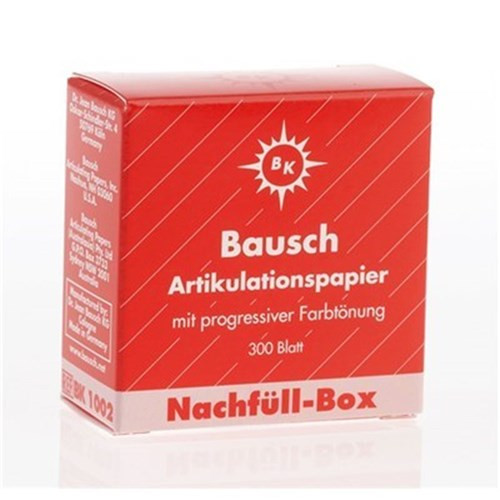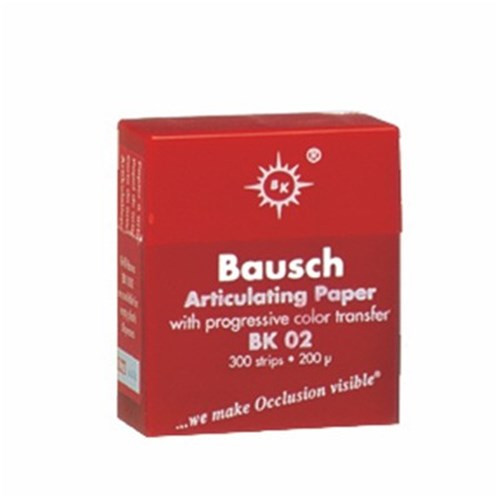Articulating Paper
Optimise bite accuracy with dental articulating paper
Enhance your dental practice's diagnostic precision with articulating paper. Designed for meticulous bite checks and occlusal adjustments, our dental articulating papers come in vibrant red and blue hues to ensure clear visibility against any tooth surface.
By providing sharp, distinct markings, these tools are essential for accurate evaluations and adjustments during dental treatments. Buy articulating paper at Erskine Dental today.
Precision diagnostic tools for dental professionals
Articulating paper is essential for dental professionals who prioritise precise diagnostics in their practice. This tool is invaluable during bite checks and occlusal adjustments, enabling dentists to clearly see and adjust how teeth meet.
Such precision is crucial when fitting dental restorations, crowns or appliances, as they conform comfortably to the patient’s bite. Accurate adjustments enhance the treatment's effectiveness and boost patient comfort and satisfaction significantly.
We supply Bausch articulating paper in various package sizes — 300 strips for busy clinics with a high daily patient volume, 200 strips for regular use and compact 12-book boxes suited for practices with occasional needs or limited storage. These options help you keep your operations lean and effective.
With the choice of red or blue papers, dentists can select the shade that offers the best contrast against the dental materials used. Dental articulating paper makes it easy to spot precise contact points for accurate adjustments.
Shop articulating paper in bulk at Erskine Dental
Browse Erskine Dental for your articulating paper needs and experience the difference that precision tools can make in your practice. We are committed to helping dental professionals achieve exceptional diagnostic accuracy, enhanced patient comfort and improved procedural efficiency.
Explore our bulk purchasing options by logging into our site or reaching out to us directly. Elevate your dental care standards with Bausch dental articulating paper that professionals trust — select from our range of package sizes to match your clinic’s needs perfectly.
Feel free to delve into our resources for expert insights and take advantage of our special deals. We also encourage you to browse our extensive selection of Piksters® Dental products for more advanced dental solutions. For any questions or to receive personalised support, please get in touch with us.
FAQs
What do articulating papers do in dentistry?
Articulating paper is a diagnostic tool used by dentists to detect contact points between the upper and lower teeth during biting. It helps identify high spots, premature contacts or inadequate margins on dental restorations.
It keeps every dental work aligned and comfortable for the patient. This tool is crucial for accurate bite adjustment and verification and helps optimise the fit and function of dental appliances like crowns, dentures and other restorations.
What is the difference between red and blue articulating paper?
The primary difference between red and blue articulating paper lies in the contrast they provide against different dental materials. Red articulating paper is typically used against lighter-coloured dental materials, as it stands out clearly, making it easier to see the markings.
Blue articulating paper, on the other hand, provides excellent visibility against darker dental surfaces. The choice of colour depends on the materials predominantly used in the dental practice and personal preference for visibility.
What thickness of articulating paper is used in dentistry?
The thickness of dental articulating paper can vary, generally ranging from 40 micrometres (µm) to 200 micrometres (µm). Thinner papers, closer to 40µm, are often used for more precise bite adjustments as they can indicate very subtle contact points.
Thicker papers, up to 200µm, are used for clearer indications of occlusal force and contact. The choice of thickness may depend on the specific diagnostic needs, the complexity of the dental adjustments and the dentist's preference for sensitivity and accuracy in marking.














